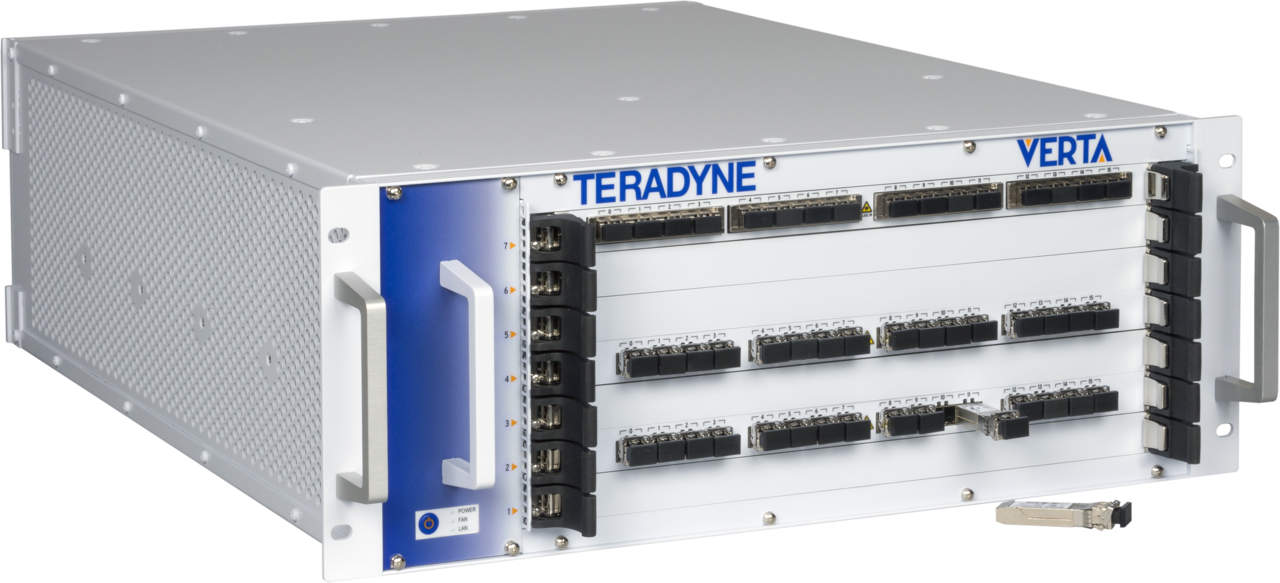
Teradyne’s VERTA can check optical power levels at all sending and receiving ports of units under test (UUTs) to isolate faults in the boxes’ optical transceivers. Photo courtesy of Teradyne
The U.S. military’s gradual move from copper- to fiber-optic-based avionics communications in areas such as radar and electronic warfare poses challenges. One problem is that components such as optical transceivers, which convert optical signals into electrical signals and back again, age more rapidly in an environment with high shock and vibration levels as well as temperature extremes. The components may start to fail in subtle, hard-to-detect ways.
In addition the amount of optical signal that’s available on the receiving end — after accounting for losses in transit — may be a “very narrow margin,” said Tony Erwin, product manager with Teradyne’s Defense & Aerospace Group. “We feel it’s very important to be able to tell diagnostically what’s going on.”
The company’s new optical tester/switch matrix, VERTA, can check optical power levels at all sending and receiving ports of units under test (UUTs) to isolate faults in the boxes’ optical transceivers. The LXI-based depot-style tester pre-integrates high-density switching — between avionics boxes and test instruments — optical power meter, and optical attenuator functions into one piece of equipment, something that’s unique in the ATE industry, Erwin said. (LXI stands for LAN eXtensions for Instrumentation.)
It can also be forward-deployed on an aircraft carrier or used in factory test, he added. At the same time that it’s testing optical parametrics, VERTA sends the optical data stream to multiple data bus-test instruments that are connected to the UUTs. The test instruments can stress-test communications protocols, such as Ethernet and Fibre Channel, to see whether something is amiss at that level of the architecture.
It’s important to test optical parametrics and bus functions simultaneously, Erwin said, because it simulates real-world network operating conditions “by margin-testing optical transceivers across the full operating power range while communicating to the UUTs” via their own bus/network protocols. Overall test time is also shorter. VERTA can measure average power within plus or minus 1.1 dB accuracy, he said.
Here’s an example of where VERTA would shine: Box A is talking Ethernet to Box B, and everything seems fine. But there are underlying issues related to optical signal loss, which a functional test may not identify. Communications, for example, may be going through a lot of retries. Such a problem is traceable to the attenuation of the transmitted signal, either because of degraded output power from Box A’s transceiver transmitter or degraded sensitivity in Box B’s transceiver receiver, Erwin explained.
This story is part of an article focusing on future challenges for automated test tools. Read the full article in our October/November issue.